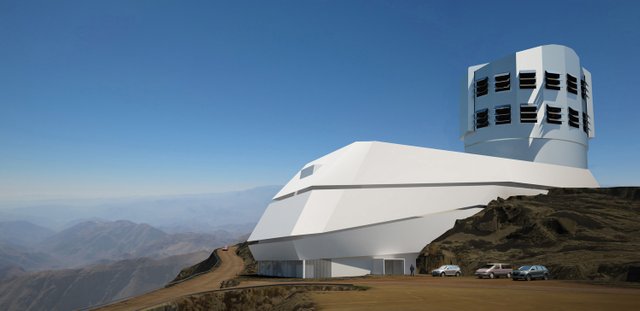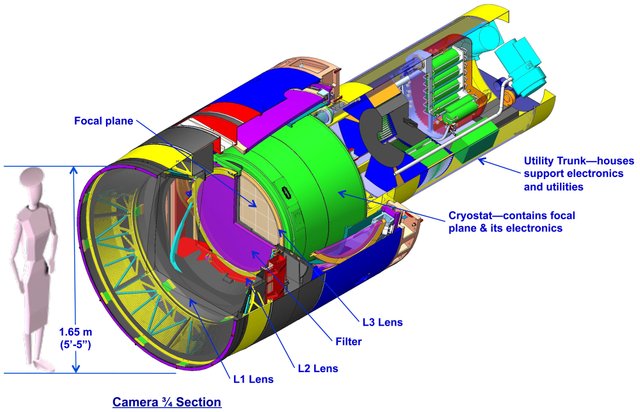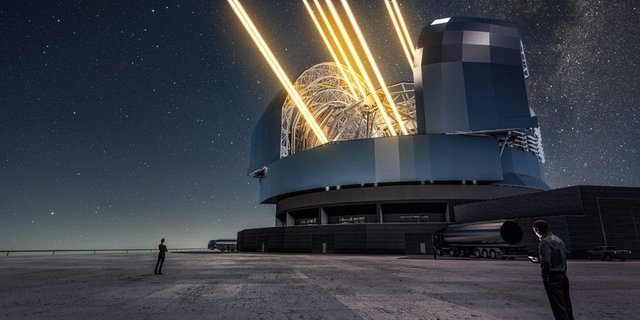Telescopes Of The Future - The Large Synoptic Survey Telescope
The next telescope I would like to introduce to you doesn't impress with the largest mirror diameter like the James Webb telescope, but all the more with its capabilities.
The Large Synoptic Survey Telescope (LSST) is not like any telescope ever built. What makes it so unique is its exceptionally large observation range. While conventional telescopes only examine single objects or very small sections of the sky for a short time, the LSST will record the complete visible starry sky every three days over a period of ten years.
Imagine a film with a time-lapse shot of the entire southern starry sky for over ten years. In this way it will be possible, for example, to trace stars that have become supernovae and study them in the time before their explosion. In addition, the LSST is expected to detect at least 20 billion new stars and galaxies.
It will also map smaller objects within our solar system, such as asteroids and comets, including those that could be dangerous to us. It will also help us track down larger previously unknown objects in the Kuiper belt at the edge of our solar system.
To fulfill its mission, the LSST will be equipped with the world's largest digital camera ever built. With a weight of about 2.8 tons and a length of three meters, the camera is about the size of a small SUV. It has a resolution of 3.2 billion pixels and a diameter of 1 meter and 55 centimeters. With this, it generates a data volume of about 20 terabytes every night. Over the entire observation period of ten years, the total data volume of processing will be several hundred petabytes.
All information that the LSST will collect will be made available directly to the public via the internet. So if you would like to join them in their research, you can do so, but you might want to consider purchasing some additional hard disks beforehand.
The LSST is currently under construction in northern Chile and should be operational by the end of 2022 / beginning of 2023.






Very cool..Personally I am very much looking forward to the constrution of the (ELT) the optical telescopes for capture the imagination and apparently it will provide images 16 times sharper than those from Hubble. I really hope so!
@madstacks The upcoming new telescopes are really very impressive.
I also wanted to write about the ELT, probably on Sunday or Monday :)
so amazing... i always dream about this kind of work ... thanks for sharing
ty for your interest @mdavila :)
Nice to see investments are still being made in science and exploration like this. These investments pay dividends in knowledge and understanding of who we are. Truly worthy of the investment.
Absolutly !
Hi, @oendertuerk!
You just got a 1.46% upvote from SteemPlus!
To get higher upvotes, earn more SteemPlus Points (SPP). On your Steemit wallet, check your SPP balance and click on "How to earn SPP?" to find out all the ways to earn.
If you're not using SteemPlus yet, please check our last posts in here to see the many ways in which SteemPlus can improve your Steem experience on Steemit and Busy.
Hi @oendertuerk!
Your post was upvoted by @steem-ua, new Steem dApp, using UserAuthority for algorithmic post curation!
Your UA account score is currently 4.831 which ranks you at #1440 across all Steem accounts.
Your rank has improved 25 places in the last three days (old rank 1465).
In our last Algorithmic Curation Round, consisting of 197 contributions, your post is ranked at #26.
Evaluation of your UA score:
Feel free to join our @steem-ua Discord server